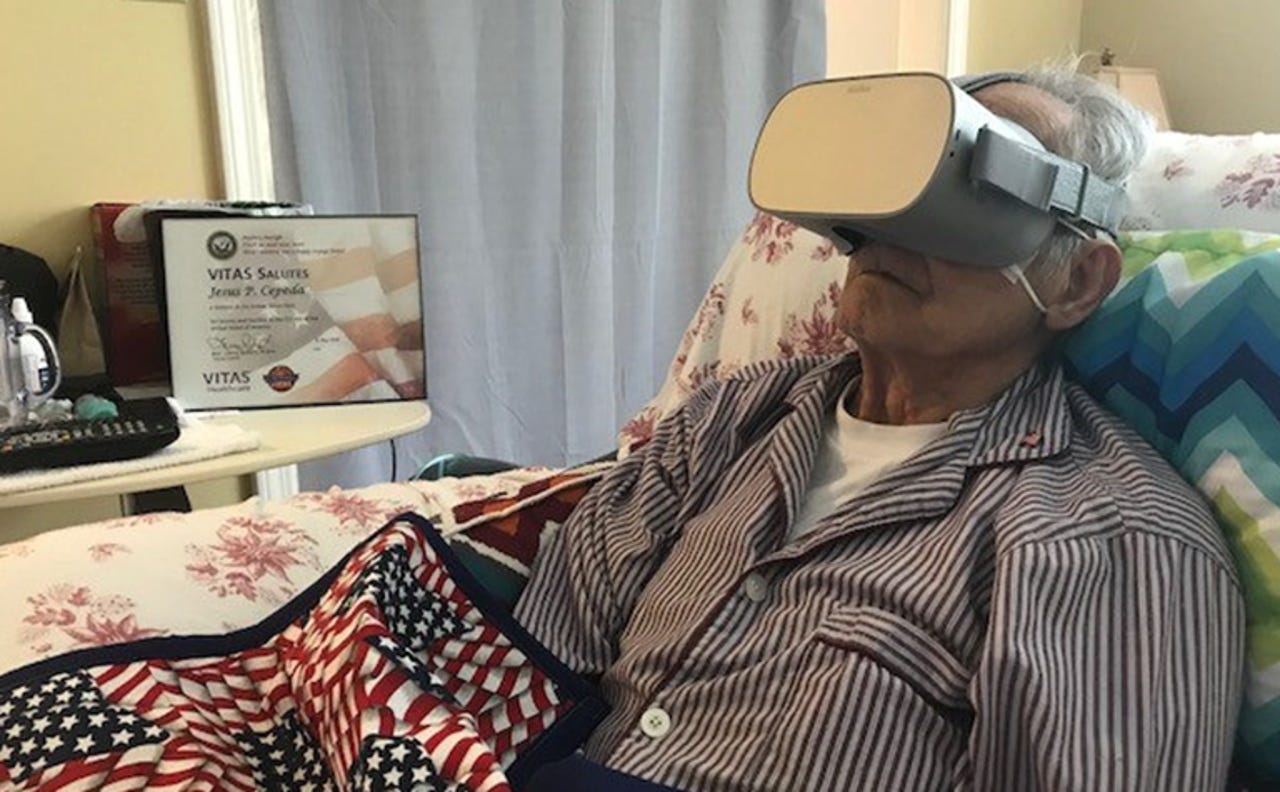Alternative Treatments: VR & 5G for reducing pain & anxiety in hospice patients


Here in Southern California, where I live, AT&T is teaming up with end-of-life care provider VITAS Healthcare to study whether virtual reality and augmented reality can help reduce chronic pain and anxiety for some hospice patients. Utilizing newly available 5G in the trial areas, the study's aim is to test low-latency connectivity and on-demand streaming AR & VR content can be leveraged toward alternative therapies administered to keep patients comfortable, calm, and mentally engaged.
It's the latest in a growing number of efforts to use mixed reality technologies to deliver medical care to patients. By one estimate, the global market for AR & VR in healthcare will top $6 billion by 2025. A more robust body of evidence will be needed, however, for healthcare providers to outlay big money on alternative treatments in the long run.
"As a pioneer of the hospice benefit, VITAS remains committed to improving patient well-being near the end of life through pharmacologic and non-pharmacologic treatments," said Dr. Joseph Shega, senior vice president and chief medical officer of VITAS Healthcare. "VR and AR has the potential to be a new alternative therapy that will hopefully benefit patients by decreasing symptom burden while increasing quality of life. Moreover, the technology could offer a unique opportunity for patients and families to do things virtually that were previously not possible in a physical sense, such as traveling to remote destinations together."
The ongoing study, which AT&T and VITAS kicked off in January, measures patient feedback while undergoing VR modules designed to help patients cope with pain and anxiety, as well as to virtually get them out of the house, including with family members who join in on trips remotely. Many hospice patients are stuck at home due to mobility issues and have limited access to the world outside. That isolation has a number of negative health implications and can spur on mental and physical decline.
This isn't the first foray into end-of-life care for VR & AR. As my colleague reported in 2017, a hospice charity in the UK has been testing ways to give those living with limited mobility access to virtual experiences that take them beyond the confines of their homes. More broadly, VR & AR are being tested for everything from surgical simulations and diagnostics to mental health treatments.
Units like OculusVR are being tested to soothe cancer patients and help mothers manage pain during labor. This is part of a broader push in the medical community to explore non-drug therapies, including meditation and mindfulness.
AT&T's interest in the study lies in finding new medical use cases for the coming 5G rollout.
"Our work with VITAS demonstrates the digital transformation taking place in another important part of the healthcare spectrum. Providers are trying to use technology in unique ways to improve care for their patients," said Mo Katibeh, Chief Marketing Officer, AT&T Business. "The use of immersive technologies, and how they can be used by businesses to fundamentally change the daily lives of their employees and customers, demonstrates the promise of 5G and how it will shape our society in the coming years."